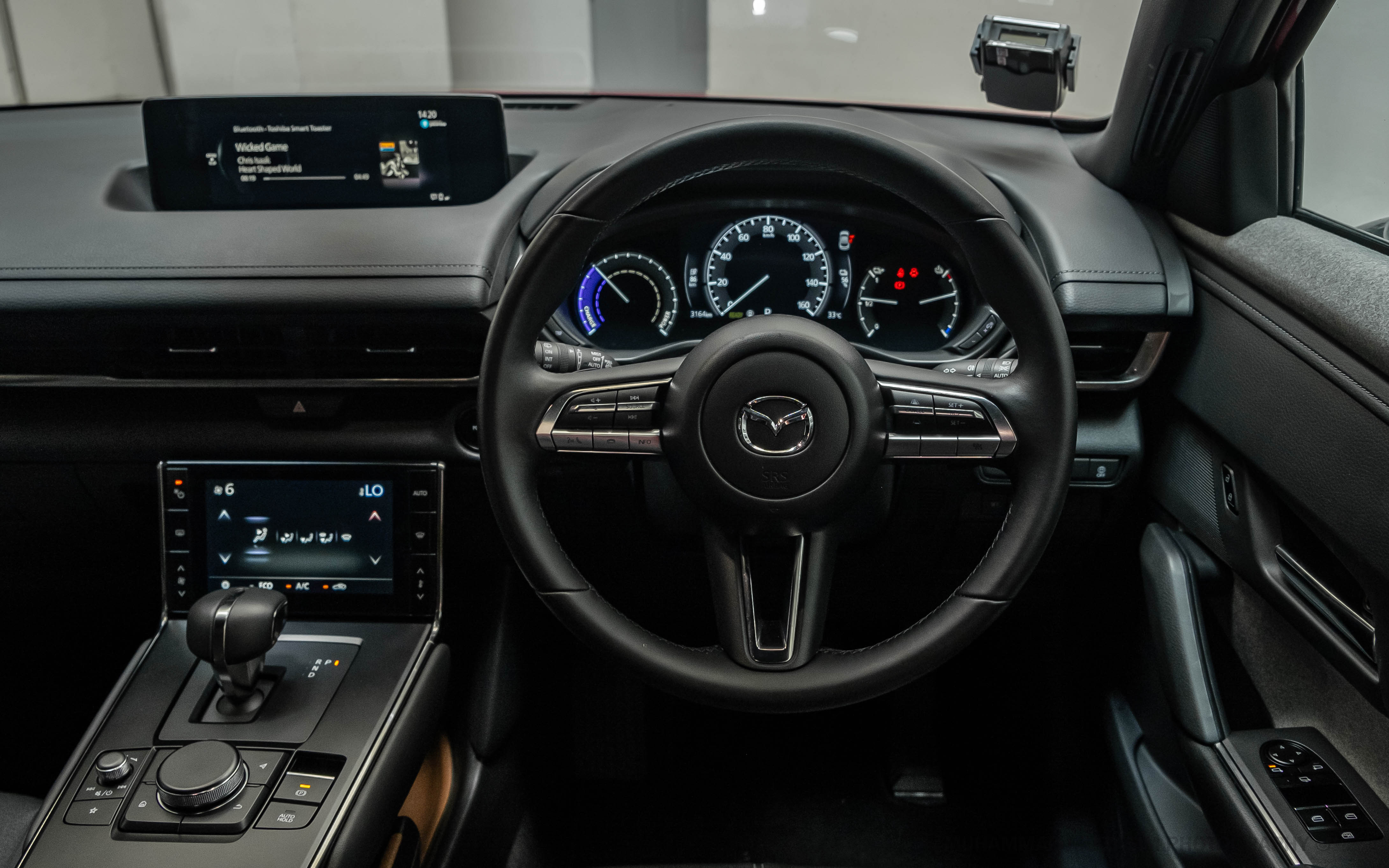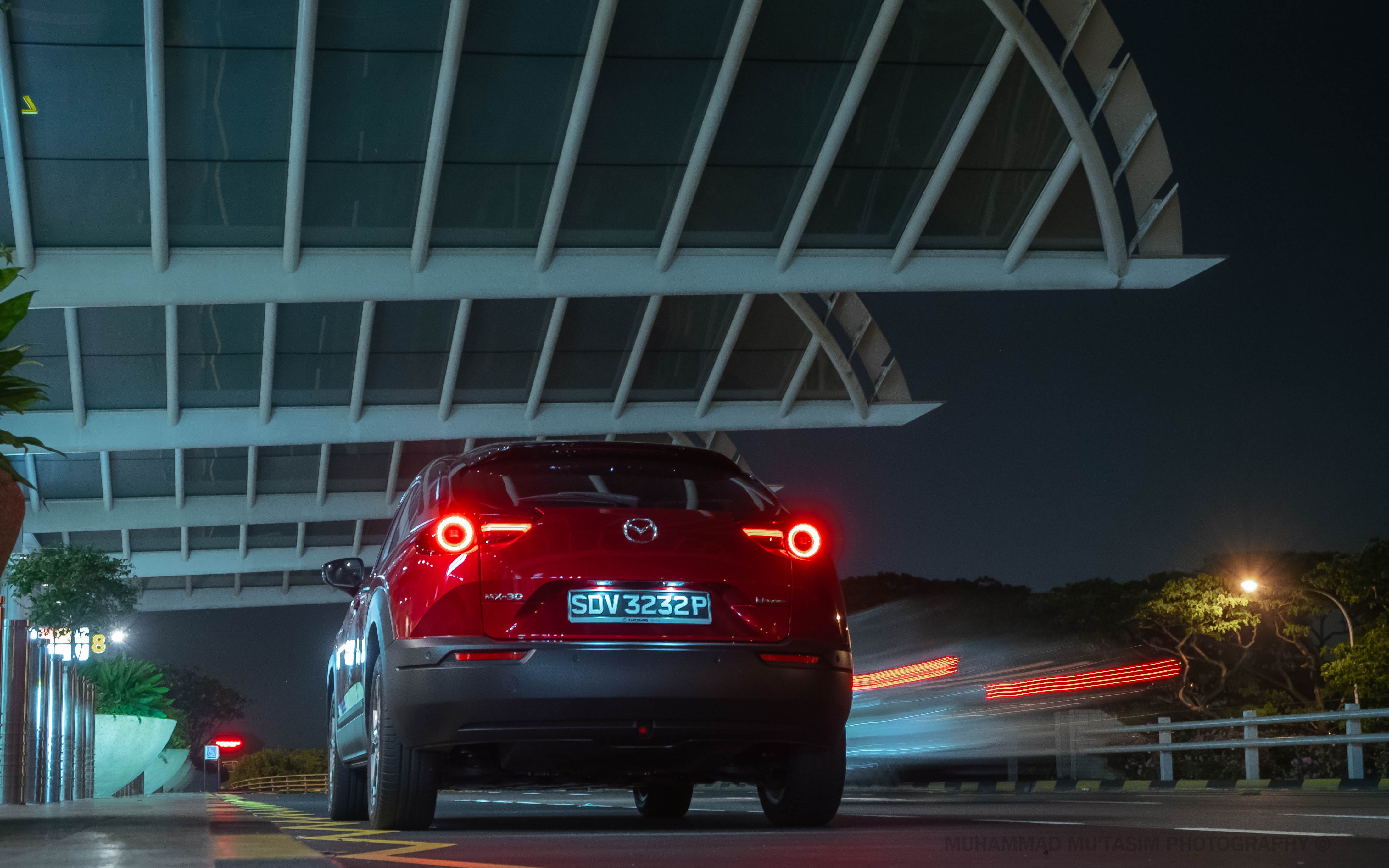mReview: Mazda MX-30 eSKYACTIV - An Imperfect Diamond

Diamonds. They're the ultimate objects of desire; crafted with utmost precision, and aimed at grabbing the attention (and wallets) of just about everyone around them.
Like many other things in the world, however, imperfections are unavoidable. Even the smallest of impurities or inclusions can make an otherwise-pristine diamond stone that much less desirable.
Which describes the new Mazda MX-30 quite well. It has a lot going for it: quirky good looks, premium build quality, and a rich heritage on which it carefully taps through thoughtful design elements. But it has a few key flaws that threaten its very survival in our cutthroat market, which may impede on the automaker's progress towards an EV-centric future.
It's Japan's Quirky Answer to the UK's MINI Electric

Before you start sharpening your pitchforks screaming "sacrilege", hear me out. While the MX-30's design does not call back the Mazda cars of yesterday as explicitly as MINI does with their Electric, it's a genuinely gorgeous car that oozes of premium goodness and fun quirkiness that set it apart from all the other EV offerings out there today.
The MX-30's tapered roofline hints at its sporty nature, with the optional blacked-out roof making it look even more compact than it really is (hint: it's surprisingly spacious inside).
Its integrated spoiler flows down and connects to the unique tail light cluster, with the pronounced tube-shaped glass bearing more than a passing resemblance of the ones found on the sublime RX-Vision concept car.

Mazda's iconic Soul Red Crystal Metallic paintwork is alluring and oh-so-beautiful, playing very well with the MX-30's sharp body lines and all-LED lights. Speaking of which, the pulsating signal indicators that gently fade away are a nice touch, mimicking the human heartbeat.
Atsushi Yoshida, one of the automaker's designers and its Lamp Development Leader, explained that the signalling animation – part of their human-centric design ethos – is supposed to ease tension and promote calmness to the viewer, which we think works rather well.


Like its CX-30 sibling, the MX-30 wears plenty of plastic cladding along its lower half, suggesting that it's a touch more rugged than the others. Don't get any cheeky ideas of going off-road, though; this quirky little Mazda is strictly front-wheel drive.
Folks of a certain vintage will definitely be reminded of the RX-8 sports car once they open the doors of the MX-30. Mazda calls them "freestyle doors", with the front and rear splitting open like a clamshell. This means no B-pillar to block passengers from getting in or out, but it also means you have to open the front doors before you can open the rear ones.
While they're impractical when you're bringing passengers out regularly, they do start conversations, much like a MINI would. Personally, we love this oddball sort of automotive design, although Mazda should have made the rear windows powered. As we've found out in our testing, it can get a little bit claustrophobic at the back.
Aiming High Inside

It's a Mazda, so expect the cabin layout to be logical, easy to use, and well-built. The carmaker's gone a step further this time with recycled materials and cork elements, giving the interior an extremely comfortable Muji-like ambience.
Adorning the door cards are "Breathing Fibre" soft-touch fabrics made from recycled PET bottles, while the patterned seats are wrapped in recycled thread which Mazda calls "Denim-Like Fabric". Other touch points are similarly high-quality, with a leather-wrapped dashboard and metal-finish console trims that do not attract fingerprints.
All in all, the MX-30's interior space is a joy for all senses, providing all occupants with a premium and homely experience unlike any other Japanese car in its class today.


The seating position is ergonomic and you're able to position your legs naturally towards the pedals, without awkwardly bending to the left or right. Up front, the MX-30 provides the driver with a 7.0-inch digital gauge cluster, and a head-up display that shows information such as its travelling speed and the current speed limit in the area.
Its switchgear is also straightforward to operate, with a healthy mix of well-damped physical and digital controls to play around with. HVAC settings are found on the floating centre console, which also houses the gear shifter and various buttons & dials for your infotainment system.

Cork elements wrap around the lower section of the console, where two separate panels also flip up to reveal cup holders. This unique material element is a throwback to Mazda's roots as a cork manufacturer in the early 20th century, while also keeping up with the theme of sustainability and elegance.
While the "freestyle door" mechanism can be jarring for first-timers, its ingress and egress capabilities are rather good. It's actually spacious enough for full-size adults to get in and out of, and the rear cabin provides surprisingly decent legroom and headroom, thanks to a relatively tall ceiling and seats that are positioned higher than the front ones.


Visibility for the rear passengers is not the best, as one would expect. Folks who are already uncomfortable sitting at the dimly-lit back of a Toyota C-HR should also avoid sitting at the back of the Mazda.
You get 350 litres of rear cargo space, which is far more than the MINI Electric's 211 litres, and about the same as on the Opel Mokka-e. With the 60:40 split rear seats completely flattened, it expands to a whopping 1,150 litres. During our testing, the boot was able to load up plant vases of varying sizes with ease, with the flat load-lip making the process fuss-free.
Agile and Fun to Drive, With a Huge Caveat

Driving dynamics have always been Mazda's forte, with precise handling and sharp cornering abilities. The MX-30 offers a similar experience for the most part, although don't expect it to perform as athletically as its MX-5 roadster cousin.
With its 35.5 kWh battery pack providing the juice, the MX-30 puts out 107 kW (143.5 bhp) and 271 Nm of torque. The electric crossover feels composed when you throw it around the corners, with the light steering and torsion beam rear suspension keeping things exciting. It's particularly impressive when you consider that the Mazda is over 2.1 tonnes, but of course, excessively fast cornering will lead to considerable body roll.

It's fairly peppy too even when carrying three other full-size adults, which is especially helpful when overtaking other cars on the motorway. Acceleration on the Mazda is more than good, although its 0-100 km/h timing is a bit uninspiring at 9.7 seconds.
At city speeds, the MX-30 is exceptionally quiet and comfortable, soaking up humps fairly well. And with five levels of regenerative braking available, the Mazda is suitable for many types of drivers, all with different driving habits.

We reckon many folks will find themselves using the brake regen function quite often, no thanks to the paltry range available. At full charge, the MX-30 gets about 200 km of range only, which drops quite rapidly even when it's being driven sensibly.
While it may seem logical to own one if your driving route is strictly city-based with chargers laid out at your destinations, it's simply not a good long-term prospect if you frequently drive on the expressways or beyond our borders.

We find its range disappointing, as it severely limits the time spent enjoying the MX-30's well-balanced chassis and being inside its excellent cabin. And in a market that's becoming increasingly saturated with EVs that can easily clock above 400 km on a single charge, Mazda's got a lot of catching up to do.
Thankfully, replenishing the battery is fairly quick. From 20-80%, the EV can charge up in just 25 minutes via a DC outlet. With AC, it takes just under eight hours, which means it's perfect for overnight charging.
Imperfect But Still Above Average

For what it's worth, the MX-30 is an excellent first step into the EV world for the Hiroshima carmaker. It's got all the right ingredients that separates it from most other electric crossovers, and has retained many unorthodox characteristics that makes it a quintessential Mazda. In other words, the MX-30 is effectively a diamond in its class.
But the painfully small range may be a deterrent for some car buyers, especially when competition is stronger than ever before. If Mazda can sort this out for the next iteration of the MX-30 (or bring in their plug-in hybrid variant with the rotary range extender to our market), their EV crossover would be a much more enticing gem for the broader audience.
| Mazda MX-30 eSKYACTIV Specifications | ||
|---|---|---|
| Price: $198,888 | VES Band: A1 | |
Motor: Single Motor |
Capacity: N/A |
Power: 107 kw (143.5 bhp), 271 Nm |
Transmission: Single-Speed Automatic |
Driven Wheels: Front |
Consumption: 5.4 km/kWh |
0-100km/h: 9.7 s |
Top Speed: N/A |
Battery Capacity: 35.5 kWh |
|
Dimensions:
4,395 mm x 1,795 mm x 1,555 mm
|
Wheelbase: 2,655 mm
|
Cargo Capacity: 350 - 1,150 litres |
Photo Credits: Muhammad Mu'tasim (@mutasimdrives)
Super App for
Vehicle Owners
Read More: mReview: Mazda CX-5 2.0 Luxury Sports - Japan's Hidden Gem
Download the Motorist App now. Designed by drivers for drivers, this all-in-one app lets you receive the latest traffic updates, gives you access to live traffic cameras, and helps you manage LTA and vehicle matters.
Did you know we have a Motorist Telegram Channel? Created exclusively for drivers and car owners in Singapore, you can get instant info about our latest promotions, articles, tips & hacks, or simply chat with the Motorist Team and fellow drivers.
